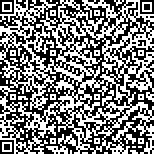下载中心
优秀审稿专家
优秀论文
相关链接
摘要

以新疆艾比湖地区为研究区域,以ASTER和SPOT卫星数据为基础,探讨了干旱环境下基于土壤与景观关系的土壤遥感自动分类方法.首先,研究以实地调查资料和第二次全国土壤普查数据库为基础,结合遥感图像信息分析了试验区土壤类型与景观的关系.然后,基于遥感图像和地形数据提取了分类特征,并采用Jeffries-Matusita 距离分析建立了适用遥感分类的土壤分类系统和分类特征集.最后,采用最大似然法进行了自动分类.研究证明,基于遥感信息和地形数据提取的分类特征,可有效地区分试验区9类土壤和地表覆被,主要包括:盐碱化土壤、荒漠化土壤等,总体分类精度达到了90%左右.
关键词:
遥感 土壤分类 干旱区 遥感技术 干旱区土壤 分类研究 Arid Area Remote Sensing Based Soil Classification 分类精度 荒漠化土壤 盐碱化土壤 地表覆被 地区 遥感信息 最大似然法 特征集 土壤分类系统 遥感分类 距离分析 分类特征 数据提取Previous reports demonstrated that data from air-and spaceborne sensors are appropriate for delineation of soil patterns.It is expected to obtain soil information conveniently in this way when conventional survey is restricted.This study was conducted to assess the application of integrated terrain and ASTER and SPOT databases for soil pattern delineation.The main objective was to test the effect of the remotely sensed data and terrain descriptor on the classification results in arid area,with a study area of Ebnur Lake,in Xinjiang,China.At first,the basic data were collected,including sensing multi-spectral images of nine basic ASTER channels,four SPOT channels and DEM data.The basic dataset was used to extract the classifying characteristics,including principal components bands,soil brightness index and the green vegetation index of tassled cap transformation,NDVI,NDMI,NDWI,texture characteristics,terrain derivatives,and so on.These characteristics constituted the classifying database for this paper.Then,with the field-derived data and supplementary soil map of genesis taxonomy achieved by the 2nd soil survey in China,we analyzed the relations between soil and landscape characteristics of remote sensing information.According to J-M distances among soil subclasses based on the classifying database,some subclasses were adjusted to adapt to classification.8 in 17 subclasses had been merged or abandoned,and 9 new classes were remained at last.The merged subclasses mainly included the same landscapes of farmland,covered by the crop.Then,a soil classification system suitable for remote sensing was established in the study area,including salinized and desertified soil mainly.Lastly,a training dataset was collected based on the soil classification system,and maximum likelihood classifier(MLC) method was performed to the classifying database.The classification error was evaluated by the confusion matrixes.It indicated that the method were helpful to the soil classification in arid area,and the overall accuracy of about 90% was satisfying.

